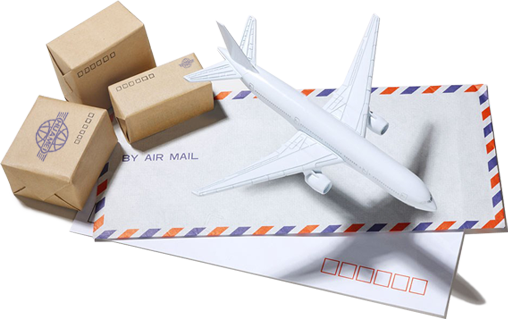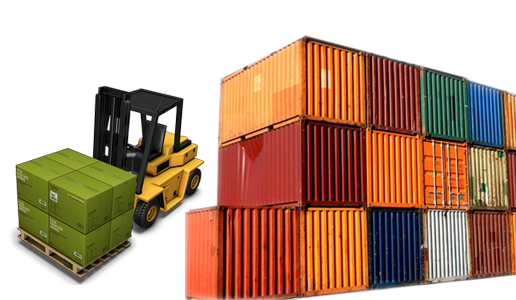Shipping electric drills Shenzhen, Guangzhou to the United States, Europe, Australia by sea sea in a FCL LCL with delivery to door including customs and taxes
Preamble: Shenzhen and Guangzhou to the United States, Europe and Australia shipping services, to provide electric drills and all kinds of industrial equipment FCL and LCL export, the price includes taxes and fees, double customs clearance services to ensure the smooth customs clearance of goods. Fast boat transportation is guaranteed to be fast and direct, and the door-to-door convenience experience will get your cargo to its destination safely. Whether it's for business or personal needs, we can provide professional sea freight solutions.
In today's increasingly frequent global trade, it is crucial to choose a reliable and efficient ocean freight service. Shenzhen and Guangzhou, as important port cities in southern China, have rich logistics resources and experience, providing exporters with highly competitive shipping solutions. Whether it's industrial equipment such as drills, or other types of cargo, we can provide you with FCL and LCL ocean freight options. We promise transparent prices and dual customs clearance, so that your goods can reach the United States, Europe and Australia smoothly and enjoy a worry-free logistics experience.
Packaging requirements for electric drills for export by sea:
The packing requirements of electric drills for export by sea are very important to ensure that they are kept safe and intact during transportation. The following are the main packing requirements for the export of electric drills by sea:
Inner packaging requirements
Shock-resistant materials: Wrap your drill in styrofoam, bubble wrap, or shock-resistant foam to ensure it can absorb shocks.
Moisture-proof treatment: Use a moisture-proof bag or desiccant (such as a silicone pack) to be placed inside the package to prevent moisture from damaging the drill.
Single protection: If there are many accessories for the electric drill, it is recommended to pack each accessory separately to avoid collisions and abrasions during transportation.
Outer packaging requirements
Sturdy outer box: Use a pressure-resistant, impact-resistant corrugated or wooden box to ensure that the outer box can withstand the pressure of transport and stacking.
Fixing measures: Use wooden strips or other fixing materials to fix the drill firmly inside the box to avoid moving during transportation.
Sealing treatment: The outer packaging should be sealed with strong tape to prevent moisture and dust from entering.
Identification requirements
Obvious marking: Paste warning labels such as "fragile goods" and "handle with care" on the outer box to ensure that the handling personnel pay attention.
Clear labeling: Attach a shipping label, including information about the consignor and consignee, description of the goods, weight and dimensions, etc.
Anti-rust treatment
Rust inhibitor coating: Apply rust inhibitor to the metal part of the drill to prevent rust.
Compliance requirements:
Compliance with international standards: Ensure that all packaging materials comply with international maritime regulations, such as ISPM15 standard (requirements for wood packaging).
Environmentally-friendly materials: use environmentally friendly materials as much as possible and meet the relevant laws and regulations of the importing country.
By following these packaging requirements, you can effectively reduce the risk of damage to the electric drill during the sea transportation process, and ensure that the goods arrive at their destination safely and smoothly. Before shipping, it is recommended to communicate with a professional logistics company to understand the specific packaging details and suggestions.
The price of electric drills to the United States, Europe, Australia and Australia:
The price and duration of shipping a drill to the United States, Europe, or Australia will vary depending on a number of factors. Overall, depending on the market conditions and your specific needs and budget, we can provide you with a personalized sea freight solution and detailed quotation information. Normally, the time taken to ship a drill to the United States, Europe or Australia is 3-6 weeks, but it will vary depending on other factors. If you have further questions or need a quote, please contact our logistics team with the details of the goods and we will provide you with a tailor-made logistics solution. Here are some of the factors that affect price and timeliness:
The price of electric drills by sea to the United States, Europe, Australia:
The price of electric drills by sea to the United States, Europe, Australia
FCL LCL cost: according to the volume and weight of the goods, two options are provided: FCL and LCL.
Tax-inclusive service: including all export and import duties to avoid additional costs.
Customs clearance service: provide customs clearance services at the port of departure and the port of destination, and seamlessly connect the whole process of logistics.
Door-to-door service: from the shipping location to the final destination, including all necessary loading and unloading and transportation costs.
Transit time for shipping electric drills to the United States, Europe, and Australia:
Timeliness is one of the key points of our service, ensuring that your drill arrives at its destination in the shortest possible time:
Express shipping: The average transportation time from China to the West Coast of the United States is about 15-25 days, 25-35 days in Europe, and 30-40 days in Australia.
Pre-arrangement: estimate the shipping time in advance to ensure that the goods are on time.
Fast customs clearance: customs clearance service guarantees fast customs clearance at the port of destination to avoid delays.
Precautions for export of electric drills by sea:
Due to their high accuracy and expensive value, electric drills require special attention to safety and protection measures during the export process by sea. Here are some key considerations to help ensure your cargo arrives safely at its destination:
Compliance Inspection:
Regulations of the importing country: ensure that the equipment meets the import standards and regulations of the destination country (the United States, Europe, Australia) to avoid being returned or fined for non-compliance.
Special license: Some equipment may require an export license or other government approval documents, which should be verified and obtained before shipment.
Packaging and Labeling:
Professional Packaging:
Shockproof measures: Wrap the device with high-density foam or bubble wrap to reduce the impact of shipping vibration on the device.
Moisture and water resistance: Make sure the packaging is waterproof and moisture-resistant, especially using moisture-resistant materials around the electrical parts of the device.
Secure Fixation: The padding is used to secure the device inside the box to prevent damage caused by movement during transport.
Clear Label:
Consignee information: Make sure that the consignee information and destination address are clearly affixed to the box.
Warning signs: If the equipment is dangerous goods or has special handling requirements, it must be clearly marked.
Document Preparation:
Complete documents: Prepare and submit all necessary export and import customs clearance documents, including commercial invoices, packing lists, ocean bills of lading, certificates of origin, etc.
Certificate of compliance: If necessary, prepare compliance documents such as inspection and quarantine certificates and export licenses.
Logistics and transportation:
Choose reliable logistics: Choose a logistics company with a good track record and professional knowledge, especially experienced in handling high-value and high-precision equipment.
Insurance Coverage: Appropriate marine cargo transportation insurance for the equipment to ensure that any loss or damage can be compensated during transportation.
Cargo tracking: use modern logistics technology (such as GPS tracking system) to monitor the location of goods in real time to ensure the visualization of transportation status.
Emergency Response plan:
Communication mechanism: Establish an efficient communication mechanism with logistics companies to ensure that information and solutions can be quickly obtained in the event of accidents.
Backup plan: In view of possible delays or problems, formulate an emergency backup plan, such as choosing an alternate route or delaying sales arrangements.
Customs Cooperation:
Communicate in advance: Communicate with the customs of the destination country in advance to understand the possible inspection and clearance requirements and reduce potential delays.
Compliance declaration: ensure that all declaration information is accurate and avoid problems caused by wrong declaration.
By following the above precautions, you can greatly reduce the risk of the electric drill in the process of sea export, ensuring that the equipment reaches international customers safely and on time. Our team of professionals will guide and support you every step of the way, ensuring that your logistics process is efficient and hassle-free.
The purchase of export insurance for electric drills:
As a high-value precision equipment, electric drills involve a variety of risks in the process of export by sea, including but not limited to cargo loss, damage, delay, etc. In order to protect your interests, it is very necessary to have proper cargo transportation insurance. Here are some of the key steps and considerations to take when purchasing sea export insurance for electric drills:
Type of Insurance:
Basic Coverage: Usually only covers the loss of goods caused by major accidents such as ship sinking and fire.
All Risks Coverage: In addition to the basic insurance, it also includes the loss of goods due to accidents (such as collisions, storms, etc.) and natural disasters during transportation.
Specific Risks: for specific types of risks, such as war risk, strike risk, etc.
Steps to purchase
Choose an insurance company: Choose an insurance company with a good reputation and rich experience in marine insurance.
Provide cargo information: provide a detailed description of the electric drill, including product model, value, quantity, packaging form, etc.
Determine the amount of insurance: usually the value of the goods plus the transportation costs and expected profits.
Sign the insurance contract: confirm the insurance terms and exemptions, and sign the insurance contract.
Pay the premium: pay the corresponding premium according to the requirements of the insurance company.
Precautions:
Valuation of goods: Ensure that the value of the goods is accurate, too high or too low valuation may lead to difficulties in settling claims.
Insurance terms: Read the insurance contract carefully to understand the coverage and exclusion clauses of the insurance.
Transportation details: ensure that the transportation details (such as routes, loading and unloading methods, etc.) meet the insurance requirements.
Record-keeping: Keep all documents and records related to goods, insurance, and transportation in order to make claims when needed.
Claims Process:
Report damage: After the goods are damaged or lost, immediately notify the insurance company and provide a preliminary loss report.
Inspection and evaluation: The insurance company may send someone to inspect the site or require relevant evidence.
Submit claim documents: provide documents including insurance policies, bills of lading, invoices, packing lists, loss reports and other documents.
Claim review: The insurance company reviews the claim request and confirms whether it meets the compensation conditions.
Compensation: After the review is passed, the insurance company will pay the compensation.
Taking out proper marine insurance not only protects your cargo, but is also an important part of your compliance operations. Consult an experienced insurance advisor or contact the insurance company directly to ensure the safe transportation of the drill.
Export customs clearance documents and processes for electric drills:
When Shenzhen Guangzhou sea freight export drill to the United States, Europe or Australia, preparing and processing customs clearance documents is a crucial step to ensure a smooth logistics process and on-time arrival of goods. Here is a detailed guide to customs clearance documents and processes:
Preparation of customs clearance documents:
Before exporting the drill, you need to prepare and submit the following key documents to customs:
Commercial Invoice:
Content: Contains details such as product description, quantity, unit price, total price, country of origin, etc.
Usage: Used for customs duty estimation and confirmation of the value of goods.
Packing List:
Content: Provide details of the packaging of the goods, including the quantity, weight, volume, etc. of each package.
Purpose: To help customs reconcile the information of goods and customs declarations.
Bill of Lading:
Contents: Proof confirming that the cargo is loaded onto the ship, including information such as the carrier, shipper, consignee, description of the cargo, port of departure and port of destination.
Use: As proof of delivery and proof of ownership.
Export Declaration:
Content: Contains a detailed description, quantity, value, origin, destination, and other information of the goods.
Purpose: To declare the goods to the customs and attach other relevant documents if necessary.
Certificate of Inspection:
Content: Issued by the inspection and quarantine authority, certifying that the goods meet the relevant quality, safety and hygiene standards.
Purpose: Prove the compliance of the goods to the importing country.
Certificate of Origin:
Content: Proof that the goods originated in a specific country and may affect import duties and quotas.
Use: To prove the origin of the goods, which may be used for tariff relief or preferential arrangements.
Export License (If necessary):
Content: Issued by the relevant competent authority authorizing the export of specific goods.
Use: Applicable to goods that require special permits.
Insurance Policy:
Contents: Proof that the goods have been insured by marine insurance.
Purpose: To cover the potential loss of goods during transportation.
Customs Clearance Process:
Document preparation: Complete all necessary customs clearance documents before the goods are loaded.
Customs declaration: Submit the customs declaration form and other relevant documents for export goods declaration to China Customs.
Customs inspection: Customs may need to inspect the goods to ensure that the actual goods are consistent with the description on the customs declaration.
Payment of taxes and fees: according to the statutory export taxes and fees, if applicable, to be paid.
Issuance of bill of lading: After the goods are released by the customs, the shipping company will issue the original bill of lading.
Cargo loading: The goods are loaded onto the ship and officially departed.
Customs clearance at the port of destination: After the goods arrive at the port of destination, the customs declaration agent of the consignee will use relevant documents for import customs clearance, including import declaration, inspection and quarantine, tax payment, etc.
By being well-prepared and following the right customs clearance process, you can ensure that your drill passes through customs and is delivered to your customers in the U.S., Europe, or Australia on time and without errors. Our one-stop service will assist you with all the complex documents and processes, ensuring that your logistics process is efficient and hassle-free.
Choose our drill FCL and LCL shipping export services and let our professional team escort your goods. The direct and door-to-door service mode of fast ship is undoubtedly the best choice for your shipment. Whether you are a large enterprise or a small business, we can tailor the most suitable sea freight solution for you to ensure that your industrial equipment such as electric drills is delivered quickly and safely around the world. Contact us now to help you explore the international market and seize more business opportunities.











